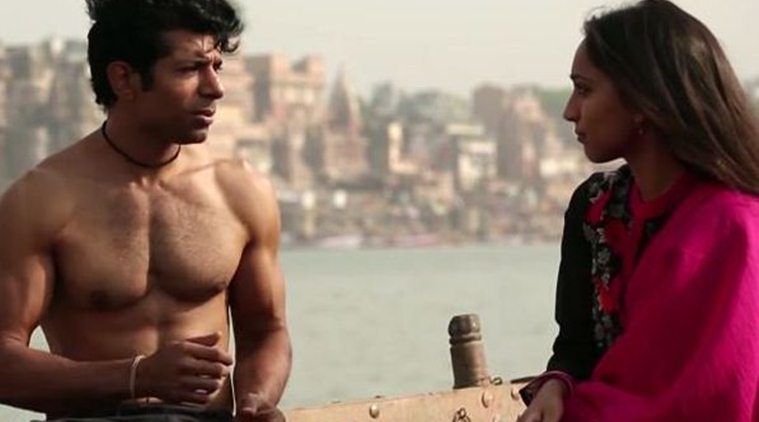Playing the victim
Is upper caste-dominated Bollywood hijacking the narrative of caste oppression?

Anurag Kashyap’s Mukkabaaz dealt with caste oppression and exogamy, had a dominant caste protagonist, depicted as “lower caste”.
The protagonist of Nagraj Manjule’s highly successful Marathi film, Sairat, is a Dalit, like himself. However, in Dhadak, the Bollywood adaptation of the film, the protagonist belongs to sacred-thread wearing upper-caste. Coincidence? Perhaps, but this is not the only such coincidence of the year. Anurag Kashyap’s Mukkabaaz, the other film of the year which dealt with caste oppression and exogamy, had a dominant caste protagonist, depicted as “lower caste”.
The caste system dictates that society is comprised of four varnas or castes. Brahmins, the priestly caste, are on top, followed by Kshatriyas, the rulers and soldiers. Vaishyas, the traders, come in third while Shudras, the menial workers, are last in the order. The first three are considered twice-born (dwija), purified by rituals and are entitled to wear the sacred-thread. Shudras or menial workers, on the other hand, are the perennial lower caste, their position is absolute. Those who fall beyond the caste spectrum are even worse because they are not only impure but polluting.
The way Mukkabaaz and Dhadak depict caste gives the message that there are no absolute upper and lower castes. A Kshatriya is lower in relation to a Brahmin and a Kshatriya is upper in relation to a Vaishya. On the surface, this claim is harmless but it has dangerous undertones. Because both the films deny the existence of the actual lower castes and appropriate their narrative of caste oppression. It’s akin to robbing a poor man of his belongings and then claiming to be poor.
The tyranny of caste is that it is a fixed identity acquired at birth and that is intransgressible. That is why caste status doesn’t exactly work like the Forbes list of billionaires, where someone can move up or down the list. Once born a “lower caste”, you remain a lower caste for life . That is why it’s both ridiculous and vicious when upper-caste heroes of films made by upper-caste Bollywood directors claim victimhood of caste oppression.
Dhadak makes another problematic statement on caste by equating it with linguistic and religious identities. In the subplots, we see a Marwari man being ostracised by his family for marrying a Marathi woman. In another subplot, a Bengali Hindu man complains about lack of acceptance for marrying a Bengali Christian woman. While such discriminations are commonplace in Indian society, the dynamics of caste work very differently from religious and linguistic identities. A language can be learnt, a new religion can be embraced, but caste is permanent. Caste is so deep-seated in Indian society that supposedly egalitarian religions such as Islam, Christianity and Sikhism also suffer from it.
By tweaking the ending of Sairat, Dhadak makes another dangerous assertion that only “lower caste” transgressors will pay with their lives while “upper caste” transgressors will have an opportunity to be reclaimed. Sairat ends with a bang. After a dream run of inter-caste romance, the reality of caste strikes back and the couple is meted out fatal punishment for their transgression. The sole survivor is the little child of the couple standing by their lifeless bodies.
In Dhadak the same ending plays out, but with a twist. The lone survivor is the upper caste girl while the “lower caste” boy and the child are obliterated. Sairat’s ending is grim yet wishful. There is a sense of yearning for a casteless society in Manjule’s imagery — hopefully, the child will grow up into a future where caste is dead. What does Dhadak do to the wishful imagery of Sairat? It turns it on its head. It says only the “upper caste” girl will survive and no one else will be spared, not even the innocent child. She will be punished for the transgression, but only through the lives of her “lower caste” husband and their mixed caste child.
Does this mean that the “upper caste” body of the girl is purified by eliminating her “lower caste” husband and son? Will she now be reclaimed by her family and reinstated in their upper-caste, feudal, patriarchal mansion where she rightfully belongs?
The film ends with a shaken expression on the girl’s face at the sight of the blood-soaked bodies, so we don’t know the fate of the girl. Yet, her fate has possibilities unlike the “lower caste” boy and their child who are dead. And dead can’t dream, can they?
Are Dhadak and Mukkabaaz deliberate attempts by upper caste Bollywood filmmakers to appropriate the critique of caste and erase the narratives of oppression by claiming equal victimhood? Or are these results of a lack of understanding of the delicate caste issue? Or, is it a well-thought-out strategy to please a presumably upper-caste audience? It’s difficult to know the answer but it’s a debate worth having.
The writer is the director of Chauranga (2016)
For all the latest Opinion News, download Indian Express App






































No hay comentarios:
Publicar un comentario